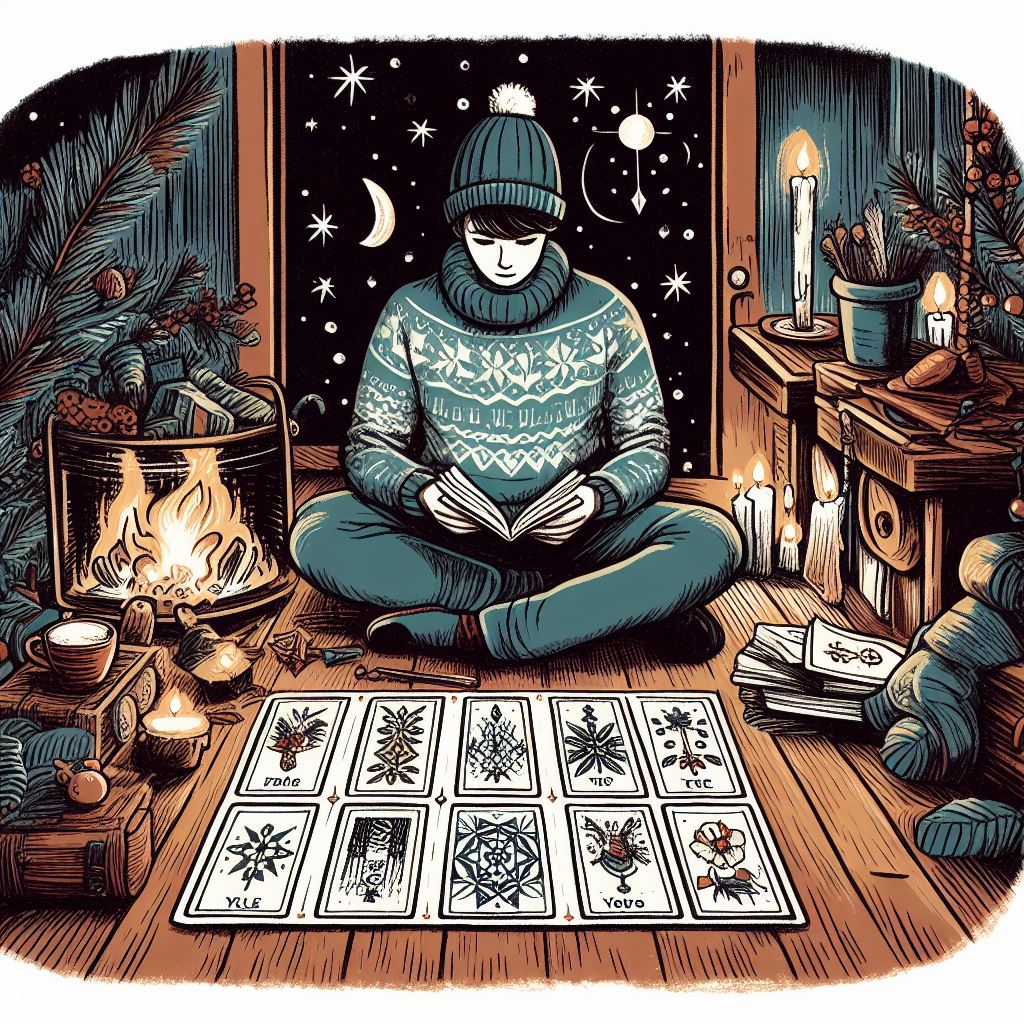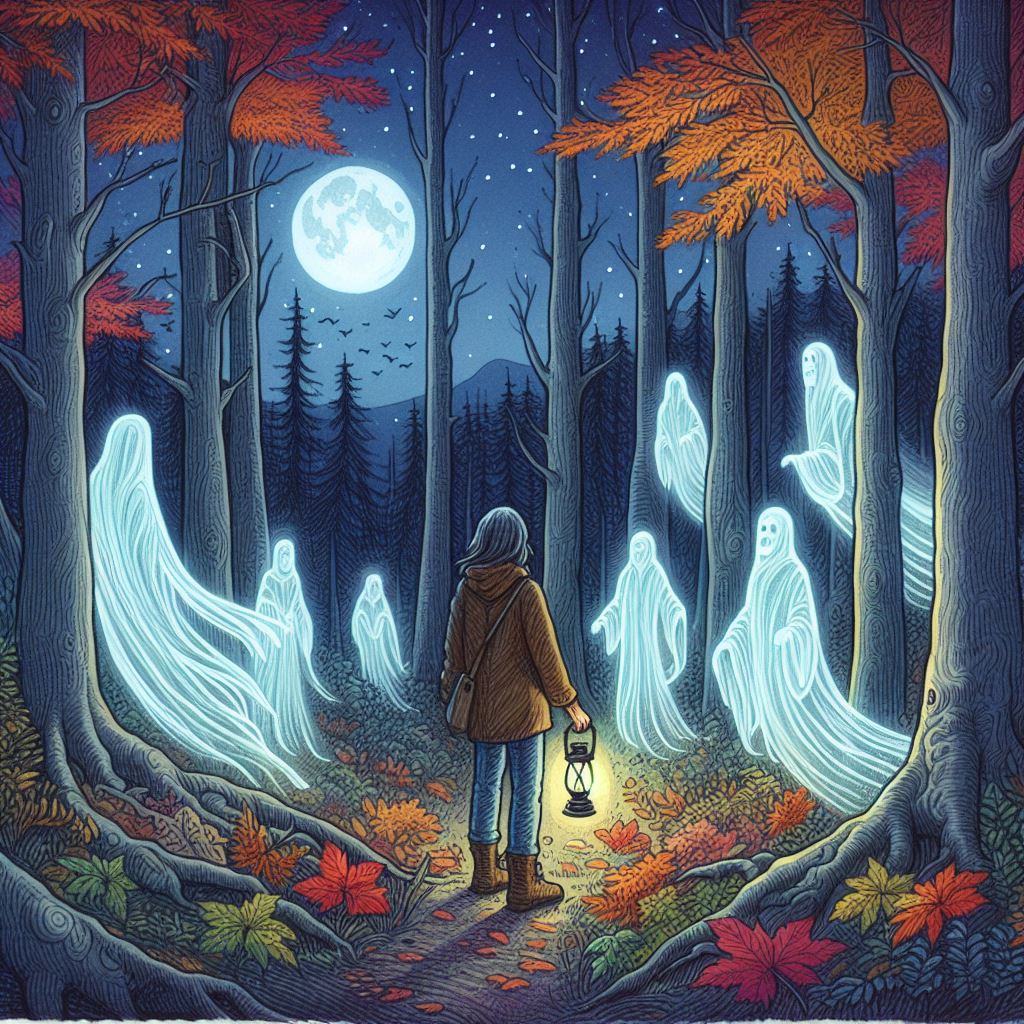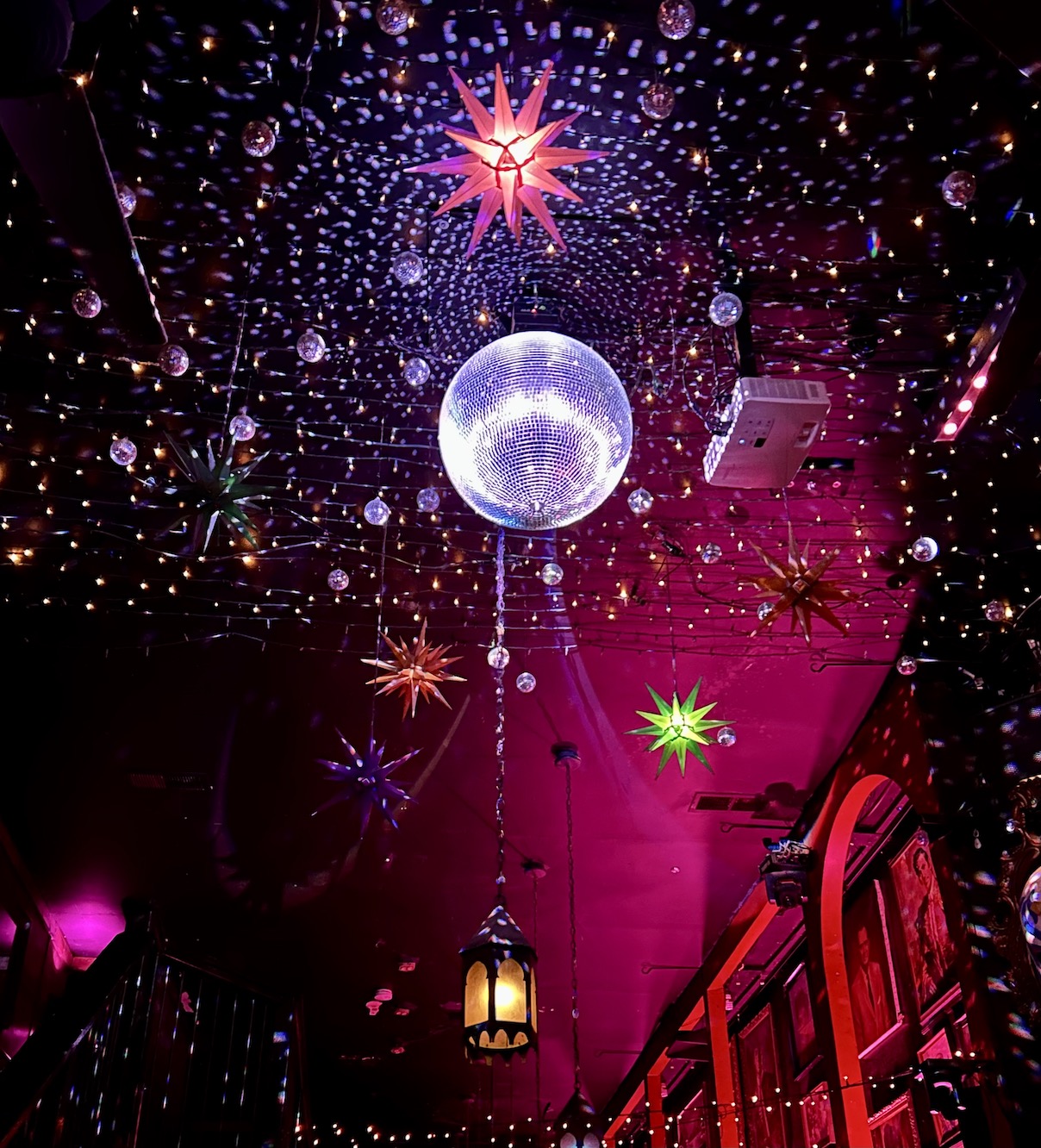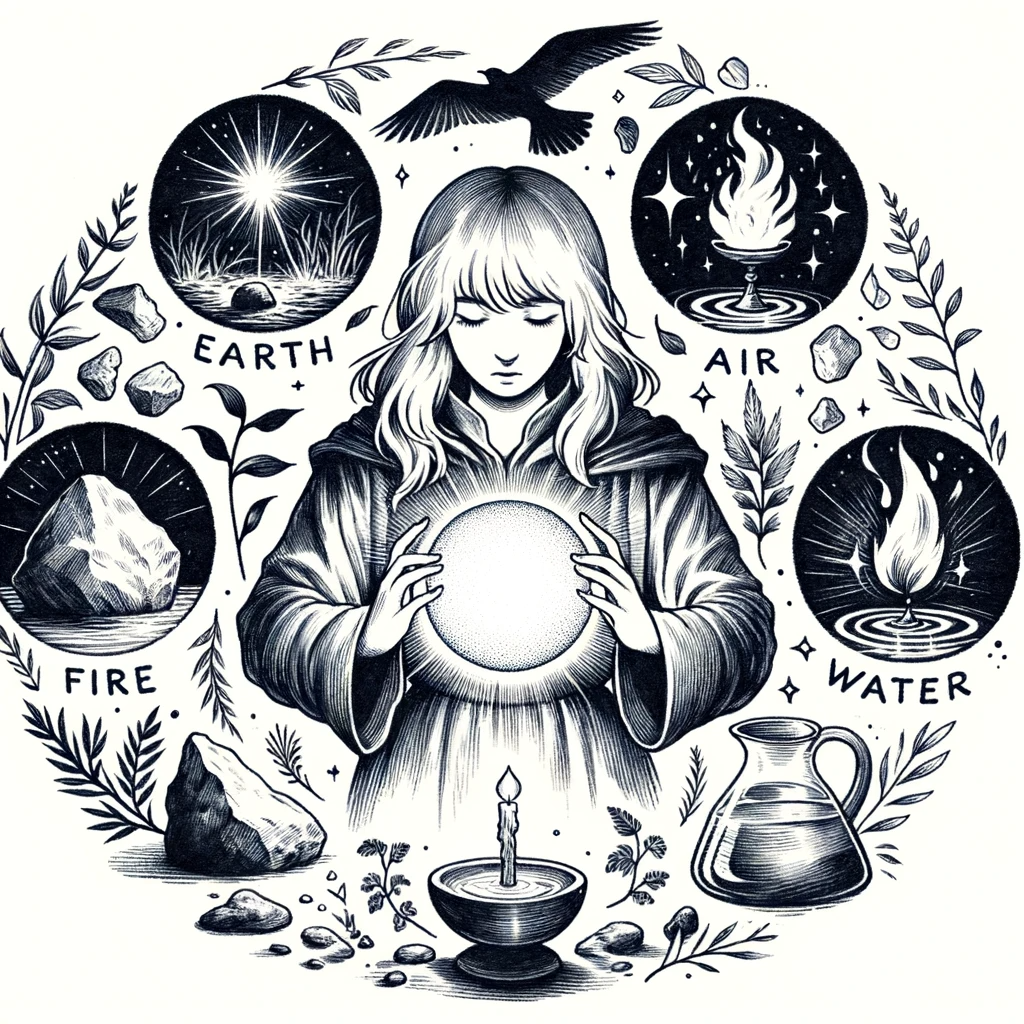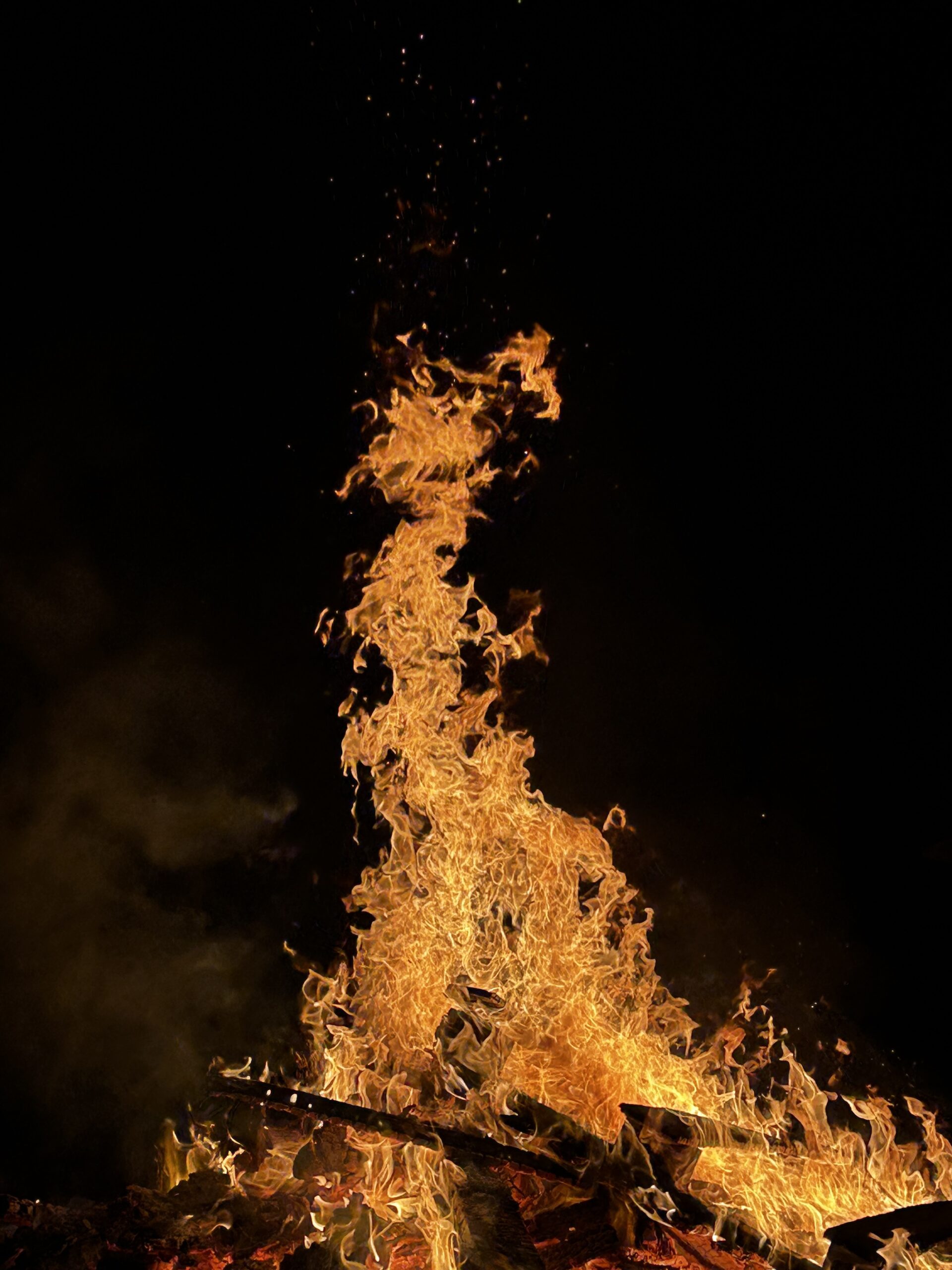As the leaves turn and the air chills, we’re beckoned into a period of profound transformation that is celebrated across various cultures and traditions. Samhain and Yule, two pivotal points in the annual cycle, are not just calendar marks but signify deeper shifts in seasonal energy that have been observed since ancient times.
These festivals are far more than mere historical footnotes; they offer a lens through which we can view the changes within ourselves and the natural world around us. Understanding these shifts is a journey into self-awareness and a deeper connection with the rhythms of nature.
Understanding Seasonal Energy
Seasonal energy is that palpable shift you feel as the wheel of the year turns. It’s in the whisper of autumn leaves and the first frost that heralds winter. This energy impacts our environment, influencing plant life, animal behavior, and even our own wellbeing.
The Wheel of the Year divides the cycle into eight segments, each associated with seasonal festivals that mark the agricultural and pastoral year. Recognizing these energies is essential to living in harmony with nature’s ebb and flow, offering us a way to reflect and adapt to each phase of the cycle.
The Wheel of the Year
The Wheel of the Year is a symbol that represents the cycle of the seasons. It includes the solstices and equinoxes, known as the quarter days, and the midpoints between them, called the cross-quarter days.
Each segment of the wheel aligns with specific seasonal energies and associated festivals. For example, the segment from Samhain to Yule encompasses the transition from autumn to winter, a time traditionally seen as a period for introspection and renewal.
Impact on Daily Life
The shifts in seasonal energy can profoundly influence our daily lives. With shorter days and longer nights, we may find our energy levels and moods changing.
Many people report feeling more reflective or subdued during this period. Embracing these shifts rather than resisting them can lead to a more harmonious existence and an enhanced sense of wellbeing.
The Essence of Samhain
Samhain, traditionally celebrated on October 31st, marks the end of the harvest season and the beginning of winter or the ‘darker half’ of the year.
This ancient festival, which originated in Celtic traditions, is a time when the veil between worlds is believed to be thinnest, allowing for communication with the ancestors. It’s a period of reflection on the past and preparation for the future, acknowledging the cycle of life and death.
Historical Roots
Samhain’s historical roots are rich and deep, tracing back to ancient Celtic societies that marked this time as one of significant change. It was a period when livestock were brought down from the summer pastures and when people prepared for the coming cold months.
The ancient Celts believed that Samhain was a liminal time when the spirits could more easily come into our world, and so they lit bonfires and donned costumes to ward off any unwelcome entities.
Spiritual Significance
Spiritually, Samhain is a powerful time for release and renewal. It’s an opportunity to let go of what no longer serves us, much like the trees shed their leaves, and to set intentions for the future. Traditionally, it’s a time to honor ancestors and to connect with our heritage.
Symbols such as the pumpkin, the cauldron, and the apple have deep roots in Samhain’s traditions, representing protection, transformation, and knowledge, respectively.
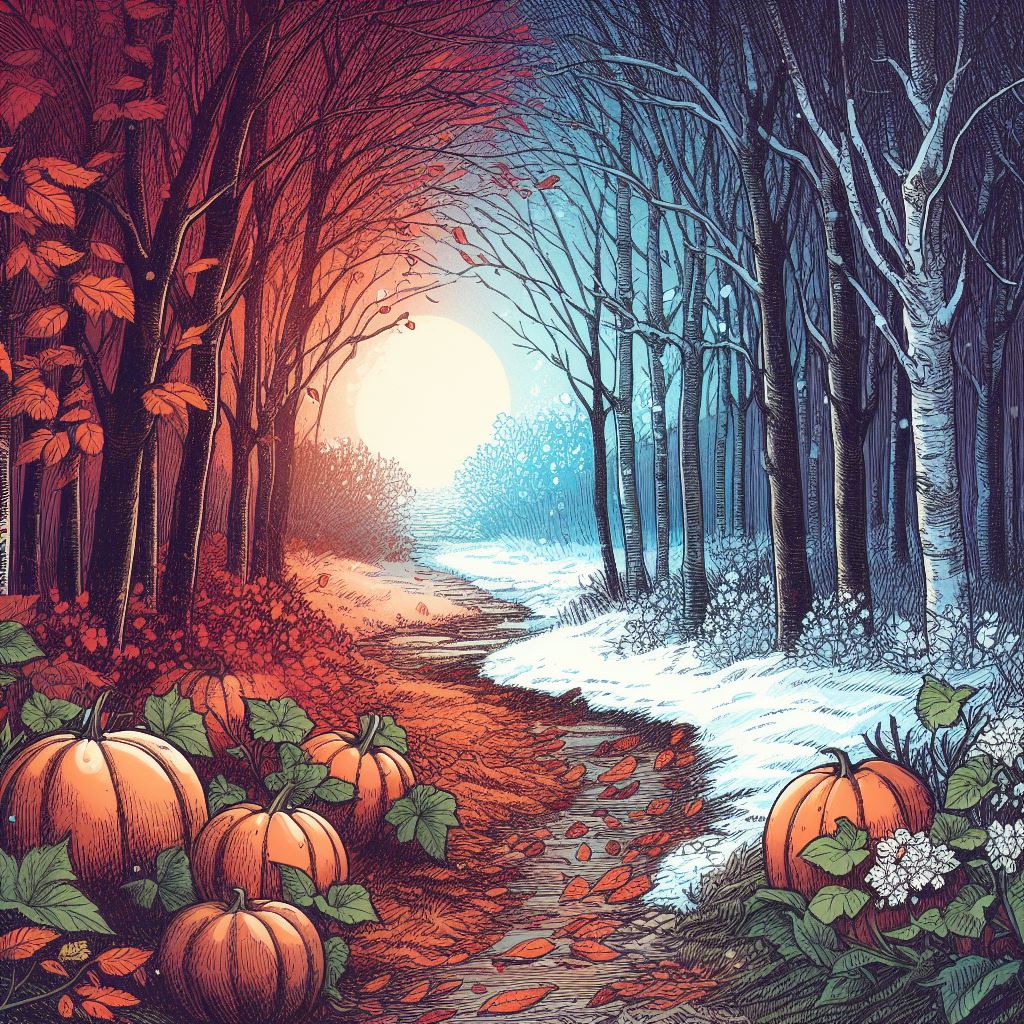
Transitioning from Samhain Energy to Yule Prep
As we move away from Samhain, the energy of release gradually transforms into one of quiet anticipation. This is the period when we begin to prepare for Yule, the winter solstice, embracing the slow increase of light that it promises. It’s a time for nurturing seeds of ideas and plans that will come to fruition in the longer days ahead.
Aligning with the Light
As the days shorten and the darkness grows, there’s an inherent pull to look inward.
Aligning with this shift means finding light within and nurturing it. It could be as simple as lighting candles to brighten the dark evenings or as profound as meditating on the inner light of understanding and knowledge.
Pre-Yule Activities
In anticipation of Yule, the time is ripe for beginning preparations. This could involve deep-cleaning our living spaces, clearing out the old to make way for the new.
It’s also a period for crafting—perhaps making gifts or decorations that will be used to celebrate the solstice, thereby weaving intention and spirit into the very fabric of our Yule festivities.
The Deepening Cold and Its Influence
As the prelude to Yule continues, the cold deepens, urging a corresponding shift within us. This is the time when nature itself retreats into a state of conservation and reflection, a model that we too can follow. It’s a period that invites us to slow down, conserve our energy, and reflect on the year that has passed.
Embracing the Dark
While the darkness of the season can be daunting, it also offers a unique opportunity for growth. Embracing the dark means finding comfort in the stillness, allowing ourselves the same rest and regeneration that the earth is experiencing.
It’s a chance to delve into deeper work, be it personal introspection or diving into projects that require focused attention.
Seasonal Wellbeing Practices
Our wellbeing during this time can benefit greatly from practices that align with the season.
This could include adjusting our diets to include more warming foods, ensuring we are getting adequate rest, and engaging in gentle movement practices to keep our bodies strong and supple. Integrating these practices into our daily routine can help us maintain balance throughout the seasonal shift.
Yule – The Winter Solstice
Yule, the winter solstice, is the shortest day and longest night of the year. It marks the point at which the light begins to return, symbolizing hope and the rebirth of the Sun.
Celebrated from December 21st, Yule is a time of joy and festivity, reflecting the rebirth of light not just in the world, but within ourselves.
The Historical Celebration of Light
Historically, Yule has been a time of great celebration. Many ancient cultures observed the solstice with feasts, merrymaking, and rituals that celebrated the return of the light.
Bonfires were lit to mimic the Sun and to coax back its warming rays, while homes were decorated with evergreens to symbolize life’s persistence through the winter months.
Modern Yule Practices
In modern times, Yule is still celebrated with joy and a sense of renewal. Lighting candles, decorating with holly, ivy, and mistletoe, and exchanging gifts are practices that not only honor tradition but also imbue our spaces with the energy of the season.
It’s a time for gathering with loved ones, sharing stories and warmth, and expressing gratitude for the return of the light.
With the close of this article, we’ve traversed the path from Samhain to Yule, exploring the profound seasonal shifts and the ways in which we can align ourselves with these natural cycles.
We’ve looked into the significance of these times, their historical roots, and how we can incorporate their energies into our modern lives for enhanced wellbeing and a deeper connection to the world around us.



